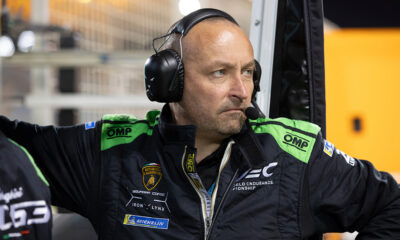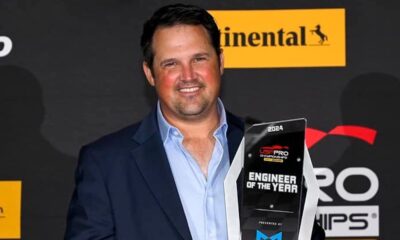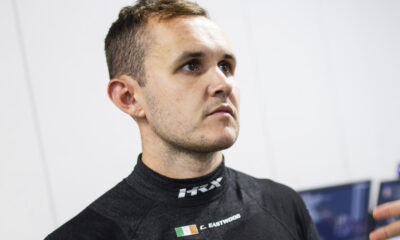The Adjustment of Performance process that will be used to manage the next generation of LMP2 cars from 2025 is designed to give all constructors “the same chance to win” according to ACO President Pierre Fillon.
The ACO and the FIA announced at Le Mans the implementation of an AoP revision up to twice a year to monitor the performance of the different LMP2 models from Ligier, Dallara, Multimatic and ORECA, which currently dominates the market.
Fillon explained that the idea for AoP in the LMP2 class originated from a system of the same name that has been used in the LMP3 formula since its 2016 introduction.
Precise details of how the AoP for next-generation LMP2 cars will operate are still to be determined, such as whether performance adjustments would be permitted mid-season.
The provision for the ACO to make performance-based changes exists in the current LMP2 technical regulations, however the AoP appears to be a more rigid framework.
“The purpose of AoP is not a new one because it exists in LMP3 today,” Fillon told Sportscar365.
“It is a frame to make the car the same for everybody.
“Normally, the cars are very close. We speak about tenths of seconds, and not seconds and if we have a small gap between the cars, it’s because we want that all the brands [to be] able to win the race.
“We will make an adjustment twice a year, just to adjust the performance of the car, but it’s not BoP. We will play just with power probably.
“It is the case in LMP3. We want that all have the same chance to win in the long term.”
ACO competition director Thierry Bouvet indicated that the AoP is a cost-effective way of managing LMP2 performance, compared with the ‘joker’ upgrades introduced in 2018.
Ligier, Dallara and Riley-Multimatic were given jokers but these did little to prevent the Oreca 07 from continuing as the benchmark and becoming the LMP2 car of choice.
“It’s to make a step from what used to be the joker to be really more cost-efficient,” said Bouvet.
“Because the cost efficiencies are key for the next generation of LMP2.
“It’s to be able to balance cars if there is any difference, to gather data on a lot of races rather than going from one event and changing BoP on a more regular basis, and changing on a less regular basis using more data.”
ORECA Accepts General Premise of AoP
ORECA’s President and founder Hugues de Chaunac believes that more discussions will be needed to define how the AoP will work in LMP2, but he has not expressed opposition to an idea that is designed to widen the market.
ORECA has emerged as the dominant manufacturer in LMP2 worldwide, during the period of regulations that started in 2017 and will conclude at the end of 2024.
The French company’s Oreca 07 has been used by 74 percent of entries on the 24 Hours of Le Mans LMP2 grid since 2017, with its share rising from 56 percent in the first year to 96 percent this year. Only one LMP2 at the most recent Le Mans was not an Oreca.
In early June, Cool Racing received the 100th Oreca 07 before racing it at Le Mans, highlighting a production figure that far exceeds the output of the other LMP2 builders.
“The fact that you have only ORECA cars now, it’s something that they would like to balance,” de Chaunac told Sportscar365.
“It’s probably a way that the ACO has found, perhaps to do [that] two times per year would be a good idea. So I think it will be discussed.”
When asked if he is in support of AoP, de Chaunac replied: “As a motorsport fan I am not a fan of BoP, AoP, etc. but when there is no choice, we’re OK [with it].”
Dallara Positive About “Reset” in Category
Andrea Pontremoli, the CEO of Dallara, has voiced support for the notion of a “reset” in the framework for LMP2 with the introduction of an AoP process.
The Dallara P217 Gibson is the Italian constructor’s current LMP2 prototype, however it is not currently being campaigned in any major championship full-time.
Dallara is the chassis partner for Cadillac and BMW in LMDh and will use that base car as the core architecture for its next-generation LMP2 machine.
“It didn’t play well for us [in the 2017 regulations] because the joker we were able to play was not the one we wanted to do,” Pontremoli told Sportscar365.
“So in the end, we remained where we were. For us, [right] now it’s not the right thing because we have a dominant player. It’s a mono series.
“On the other side, it’s a good opportunity to reset everything. The car is completely different and is based on the LMDh spine. It’s completely new and very different from the past.
“Every time that you have a reset, it’s a good thing for the people who are behind.
“We have seen this in Formula 1: they have changed the rules and now we have a lot more competitors every race. This is good for us.”



























